Two of the mainstays of floral designs are bows and puffs. Puffs are small clusters of netted fabric (sometimes called tulle) that are used as background and lightweight filler for corsages and bouquets. The netting is available in assorted colors and patterns. Bows are usually constructed from fabric ribbon, although plastic ribbons are sometimes used for outdoor pieces. Small bows are used for corsages and other arrangements that are to be worn. Larger bows are used in table arrangements and on potted plants. Still larger bows are used on wreaths, door swags, and on wedding, funeral, and grave pieces. A florist must be able to make a respectable bow and puff quickly and repeatedly. Many florists use slack periods to make them up in quantity. Note: It is the handcrafted nature of floral materials such as bows, puffs, and wiring that distinguishes floral products and justifies their cost to the consumer.
The Floral Bow
Ribbon used by florists varies in both material and width. Every few years, certain materials capture the fancy of florists and consumers. Burlap ribbons are a recent example of the faddish materials that enjoy
popularity, for a while at least. Velvet-like flocked ribbons remain popular for Christmas arrangements and weddings, as do satin ribbons. Even metallic ribbons have been tried. Regardless of the material, the sizes manufactured are standardized. The most commonly used are:
• 4V2 inches wide (No. 120): used for funeral work, arm bouquets, wreaths, and door swags
• 27/e inches wide (No. 40): used for funeral sprays, wedding work, wreaths, and swags
• 5/e inches wide (No. 3): used for corsages
• V4 inches wide (No. 1): used for corsages, as streamers for bridal bouquets, and for head pieces
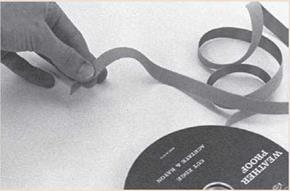 |
After practicing the steps illustrated, you will be able to produce a simple and attractive bow in Table 7-1.
|
Step 1: Hold the ribbon in your nondominant hand with the finished side toward you. |
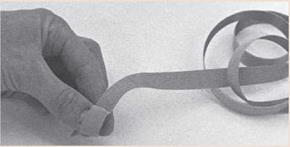
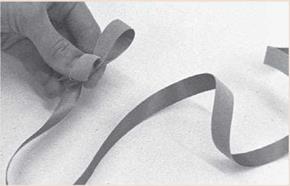 Step 2: Make a loop over the thumb and twist the ribbon beneath the thumb so that the finished side stays upward.
Step 2: Make a loop over the thumb and twist the ribbon beneath the thumb so that the finished side stays upward.
Step 3: Make the first loop (smaller than later loops will be) and gather the ribbon beneath the thumb.
Step 4: Make a second loop of equal size to complete the first pair of loops. Twist the ribbon beneath the thumb to keep the finished side upward.
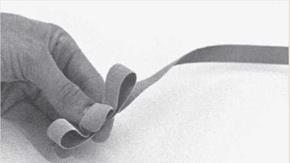
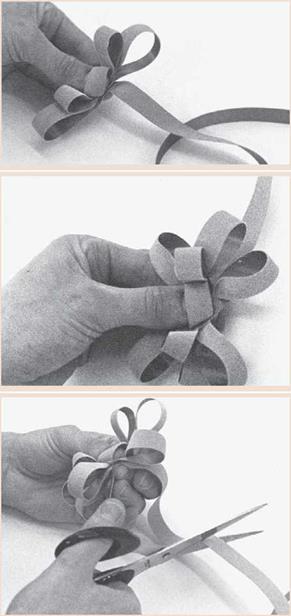 Step 5: Add a second pair of loops using the same techniques. These should be the largest loops of the bow.
Step 5: Add a second pair of loops using the same techniques. These should be the largest loops of the bow.
Step 6: Add a third and fourth pair of loops. They should be of equal size and intermediate between the size of pairs one and two. Remember to keep twisting the ribbon as it passes beneath the thumb.
Step 7: cut the ribbon free from the spool, leaving a 3 to 4-inch streamer.
continued

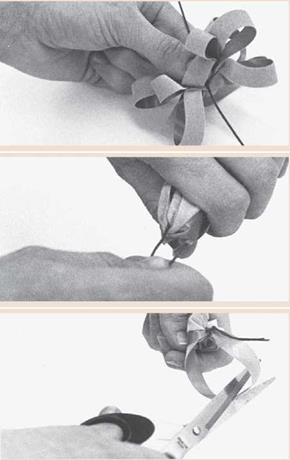
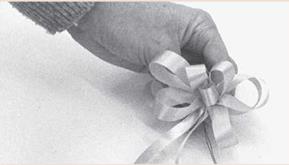 Step 8: Loop the streamer under the bow, keeping the finished side outward.
Step 8: Loop the streamer under the bow, keeping the finished side outward.
Step 9: Insert a thin wire through the center loop and beneath your thumb to secure the ribbon.
Step 10: Grasp the bow firmly and pull the wire tightly. Twist it to secure all loops in their proper place.
Step 11: Cut the last large loops, on an angle, to create streamers for the bow.
Step 12: The finished bow.
The Corsage or Bouquet Puff
Puffs fill out a corsage or bouquet without adding weight or much additional expense. The netting material comes on rolls like a wide ribbon and ranges from 27/e to 8 inches in width. The netting is cut into squares and gathered with a wire to create the puff. If gathered in the center, a butterfly-shaped puff results. If gathered at the base, a fan-shaped puff is formed. Once completed, the wires are covered with floral tape (Figure 7-15).



